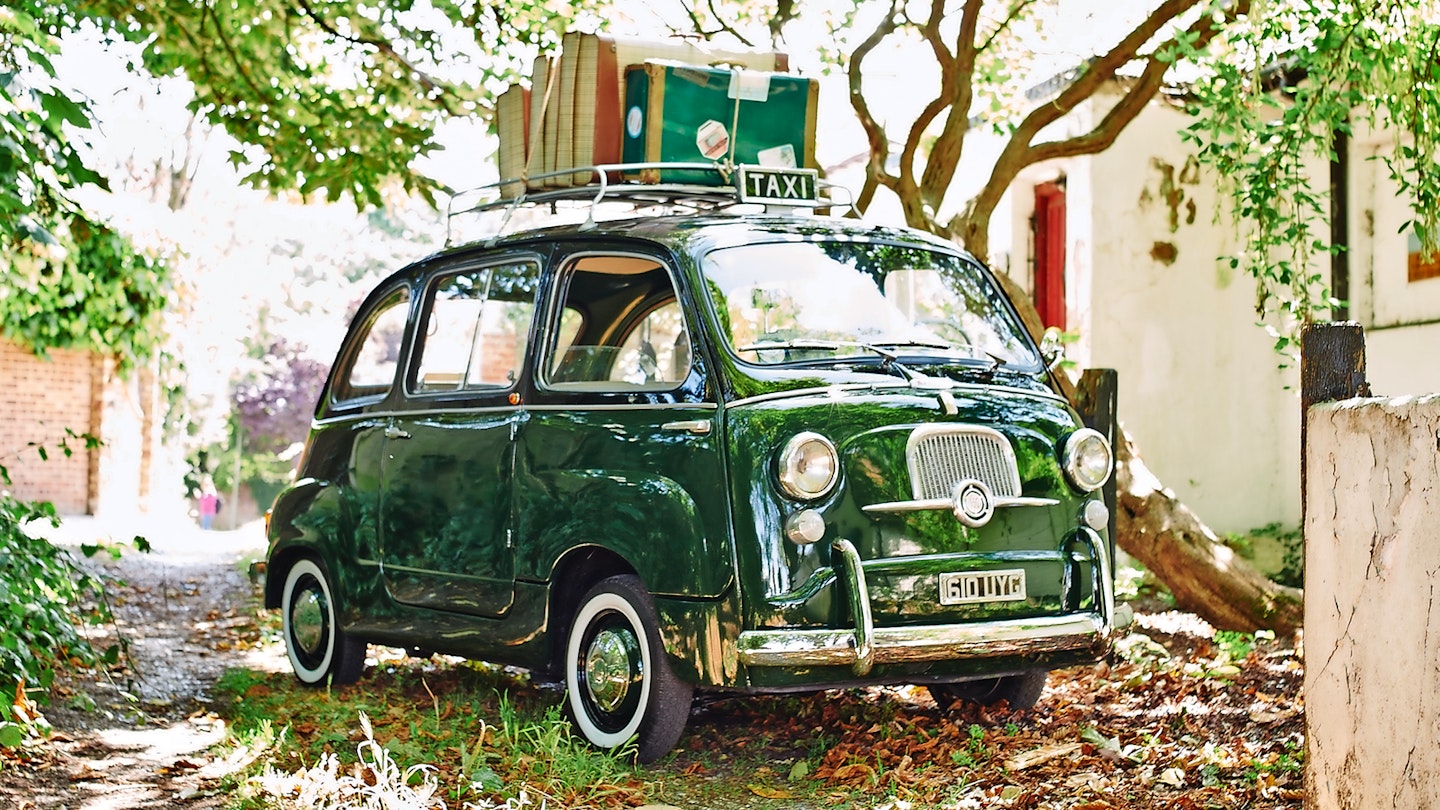Fiat’s pioneering multi-purpose vehicle, the 600 Multipla, was a regular sight at Rome taxi ranks as recently as the Seventies. We test one expertly restored as a cab
here’s nothing like the sight of a headlamp bowl by your left kneecap to focus the mind on your driving, and this is one of the many delights of the Fiat 600 Multipla. To your right is the spare wheel carrier – it might double as an air bag in an emergency, though it’s probably wiser not to test this theory. Larger drivers will find that the gearlever is positioned under their right leg. They’ll also have to fold their legs between the steering column and the instrument panel. As well as all this you’ll have to endure passers-by asking whether the Multipla is (a) one of those bubble cars or (b) electric.
Both comments are a slander on one of the most interesting Fiats ever made, a car that was serving as a taxi in Rome well into the Seventies and is as much fun to drive as a Mini Cooper. The Fiat holds the road very well, and spinning the vertically mounted steering wheel shows off the Mulitpla’s ability to dart into corners, reminding me that it was designed to travel along narrow side streets.
As Kent speeds by and Mondeo owners mouth ‘What the [naughty word] is that?’ the speedometer needle dances optimistically around the dial as an assortment of Fifties sci-fi-style telltales on the dashboard flash in accompaniment. There’s never a dull moment in a Multipla.
Like the Fiat 600, starting is via a lever, and it’s quite possible to bypass the non-synchromesh gear first and set off in second. There is also a hand throttle to help drivers in the 0-25mph dash from the traffic lights. Above that speed the Multipla’s acceleration cannot be considered brisk, but although the speedometer is only marked up to 110kph (not quite 70mph) it seems to have the ability to travel twice that speed. The forward control, the seating position and the urgent engine note all conspire to drive me ever onwards, with the slim pillars affording an excellent view.
Fortunately, the Fiat’s drum brakes are very effective – a vital consideration when you’re sitting over the front axle and there’s little between you and a potential accident except a universally jointed steering column (fitted to save space) and about an inch of Italian steel. All this encourages Multipla drivers to brush up on their defensive driving skills, especially if a battered Ford Transit van suddenly comes into view.
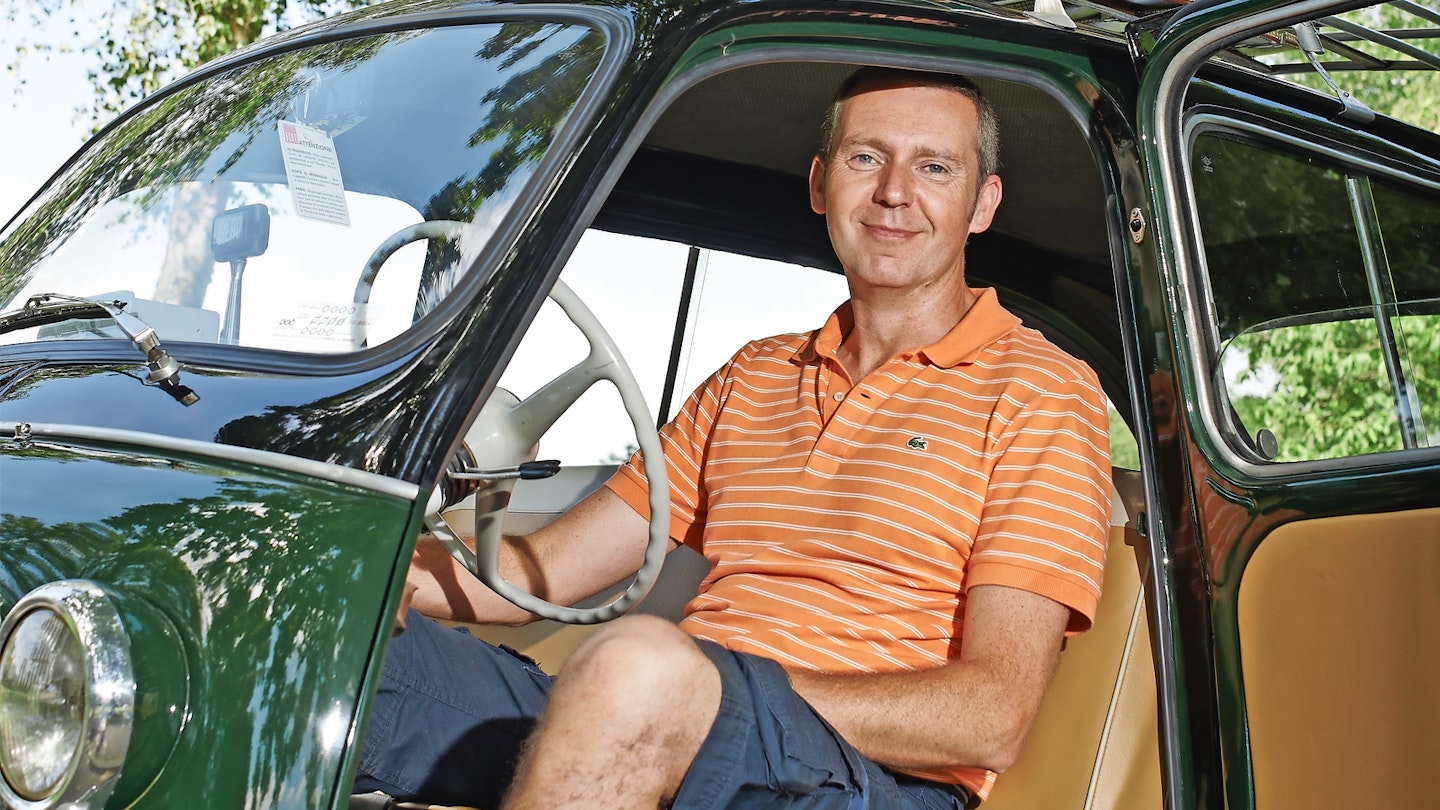
Our test car was recently privately imported from Italy. ‘It was originally a standard Multipla, but a few years ago it was converted into a Rome taxi replica with no expense spared,’ says owner Paul Algeo of Signature Classics. It’s easy to see why the Fiat won virtually every trophy in the Italian classic car circuit when it went on display in 2013 because it looks the epitome of the sort of cab primed to transport sunglasses-wearing passengers to la dolce vita. The livery is immaculate, the taxi sign illuminates (‘that really does drain the battery’) and the meter is fully functioning. There is also a genuine taxi specification roof rack (‘those cannot be obtained for love nor money’) and Paul has even added period luggage.
Entry on to the front bench can be an interesting procedure. The brochure promises ‘easy access’, but if like me you’re not of 1964 vintage Roman taxi driver dimensions this is not quite the case. There is also the vexed issue of seat adjustment, or lack of it. On the Multiplas used by private individuals the front bench is fixed, but the backrest can be varied through
three positions: uncomfortable, really uncomfortable and masochistic, but the taxi version lacks even that facility. Mini designer Alec Issigonis once said drivers should be uncomfortable at the wheel to keep them alert; he would have loved the Multipla. At least the tiny clutch and brake pedals are placed either side of the steering column, to give the taxi driver the impression that he is the next Alberto Ascari. The gearchange is delightfully precise too.
As with all rear-engine Fiats designed by Dante Giacosa, the Multipla possesses more than its fair quota of charm. The front air intake does make it look like a rather cross carp but it accentuates the coachwork’s uncompromising functionality; Giacosa decided to retain the 600’s rear, which saved on costs, established the Multipla as part of the same family and gave the car a brilliantly unbalanced appearance that is on a par with the Vanden Plas 1500. Luxuries include a dipping rear-view mirror and heating provided by air warmed by the engine, giving the Multipla’s interior that familiar Fiat boiled rubber aroma. There are also twin sun visors and a light for the engine bay together with an interior light that can also drain the battery if left on for too long.
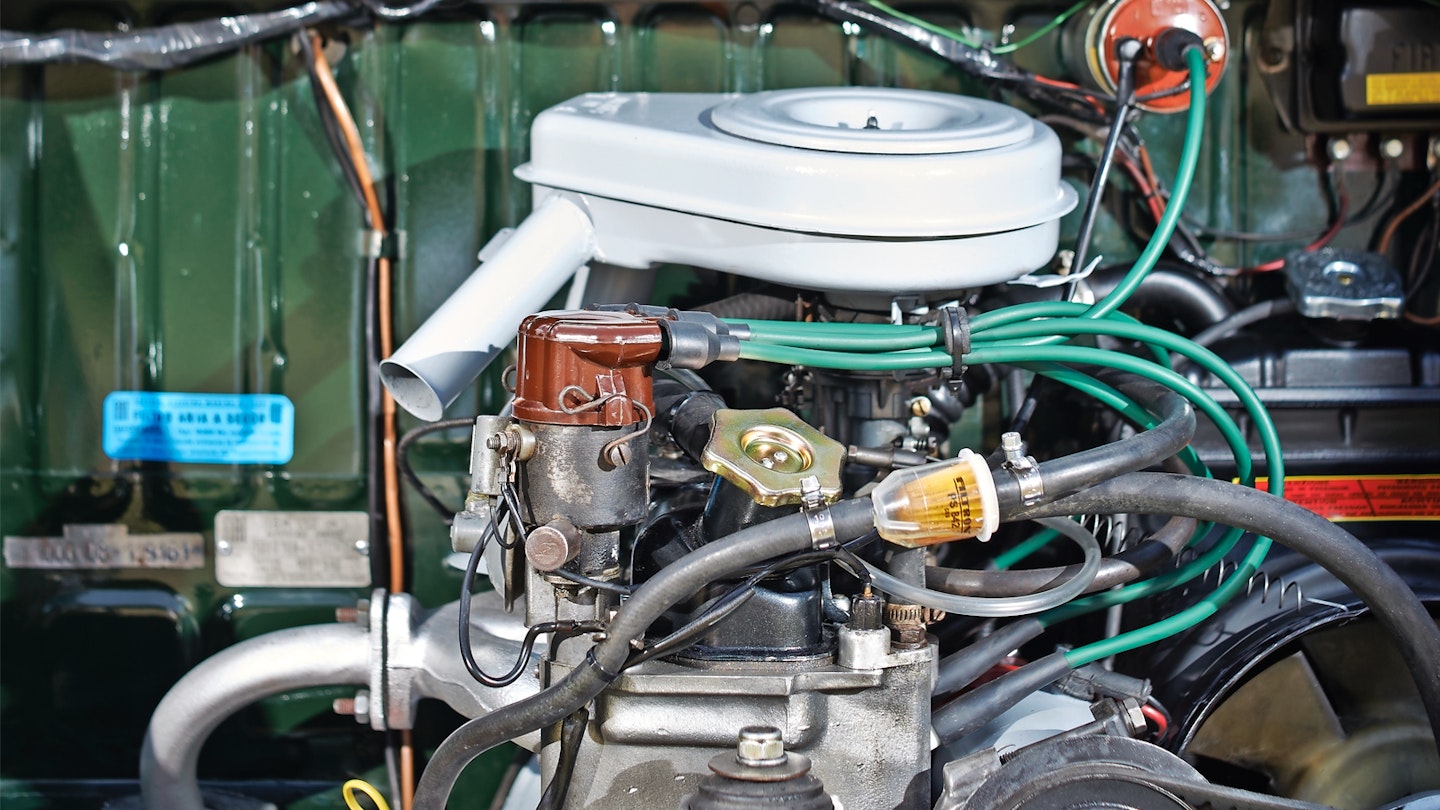
Unlike entry to the front, involving free-form limbo-dancing with a consequent loss of dignity, the back doors open wide and passengers get plenty of headroom. The Multipla is around 20cm taller than the 600 and was designed at a time when middle-class Italian men wore hats, resulting in space comparable to a large British saloon such as a Wolseley 6/110.
On the move, passengers may experience a certain rolling sensation and will certainly hear every note of the engine, but the Multipla is far from uncomfortable and even the middle row of seats can be endured without too much pain over a short journey.
As a Multipla passenger you do not travel in luxury (the floor covering looks suspiciously like hessian) but nor do you travel in discomfort and you are certainly conveyed in style. Just open the sliding window and image you can hear Domenico Modugno singing Nel Blu Dipinto di Blu – more popularly known as Volare – wafting from a pavement café rather than a Home Counties youth yelling ‘It’s one of those Reliants!’ However, his confusion is understandable because the Multipla was an extremely rare sight in Britain. Fiat imported its full range into the UK during the Fifties and Sixties, but at £643 the Multipla was considered an expensive oddity and fewer than 100 British-specification examples found buyers. In marked contrast about 150,000 were sold in its homeland, even though Giacosa admitted in his memoirs that no other vehicle he worked on during his long career caused him as many problems and sleepless nights.
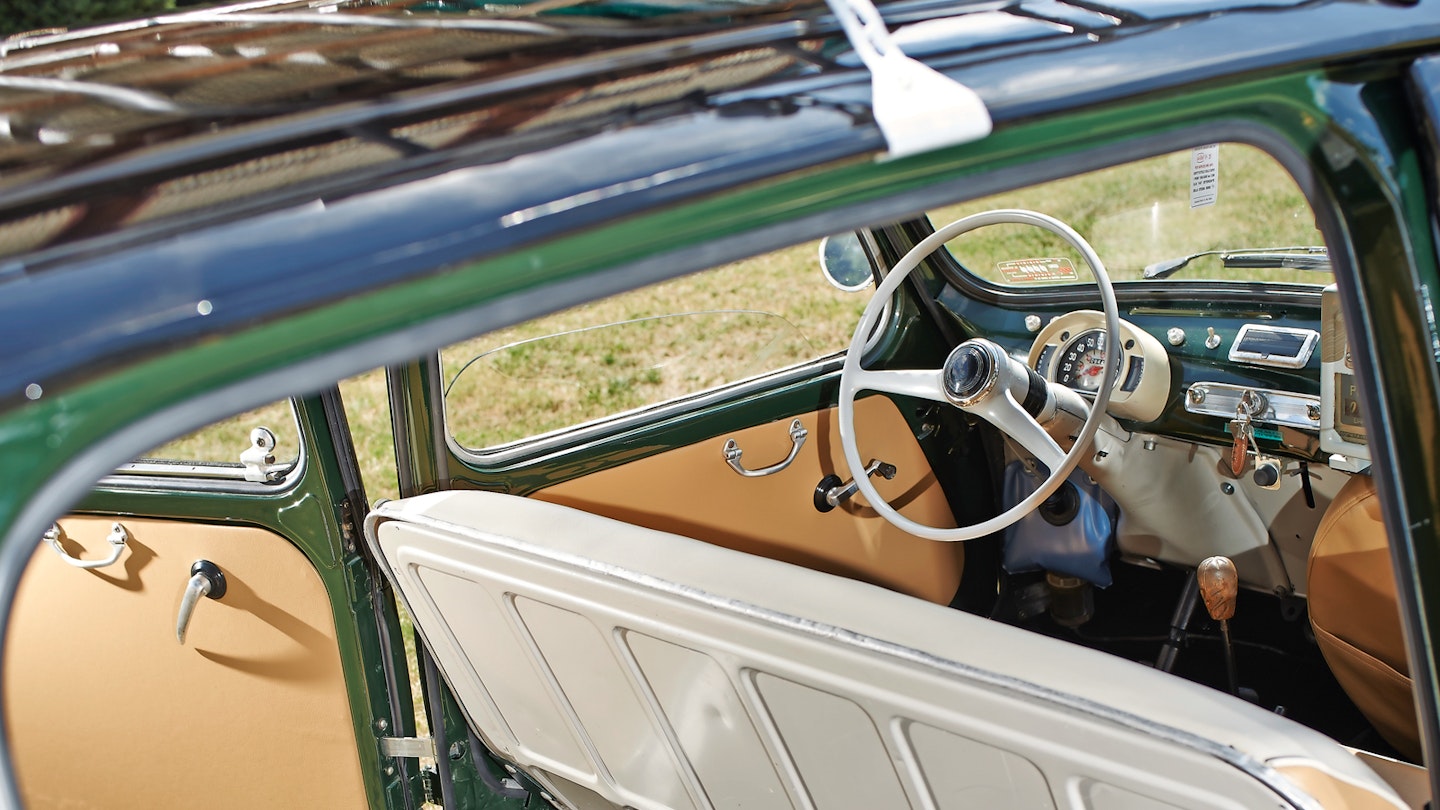
It all started in 1953, when Giacosa was asked to develop a version of the 600 with greater appeal to extended families and fleet operators. The new ‘all-service Multipla’ was intended to be launched in 1955, alongside the 600. To save costs it had to use as little steel as possible and share the maximum number of parts with its smaller stablemate. As Italy slowly emerged from the shadow of World War Two Fiat was already anticipating a time when tradesmen would need motor transport, but the 600’s rear engine ruled out a conventional station wagon or van format. This meant the front end was free of mechanicals, so Giacosa’s logical solution was to put the driver and front passenger atop the front wheels, thus allowing space for two more rows of seats between the axles. The gearbox received a modified final-drive ratio and the coil-and-wishbone front suspension came from Fiat’s 1100 saloon. The track was increased by 3½in at the front and there was also a front-mounted radiator, modified front brakes to compensate for the extra weight, a bigger fuel tank and worm-and-roller steering. Instead of a tailgate Giacosa used wide-opening side doors.
The Multipla debuted at the 1956 Brussels Motor Show. Despite initial grumbles about its looks – the wheels are from the 600, which makes the Multipla look even more top-heavy – it was recognised as a brilliant way of transporting five or even six people in a vehicle a mere 25cm longer than the 600 saloon. More power arrived in 1960 when the Multipla gained the 600D’s 767cc engine.
Production ended in 1966 when the Multipla was replaced by the 850. Fiat might have built it for longer, but unlike the 600 it was too expensive to convert the front doors to the forward-hinged layout by then demanded by the Italian government.
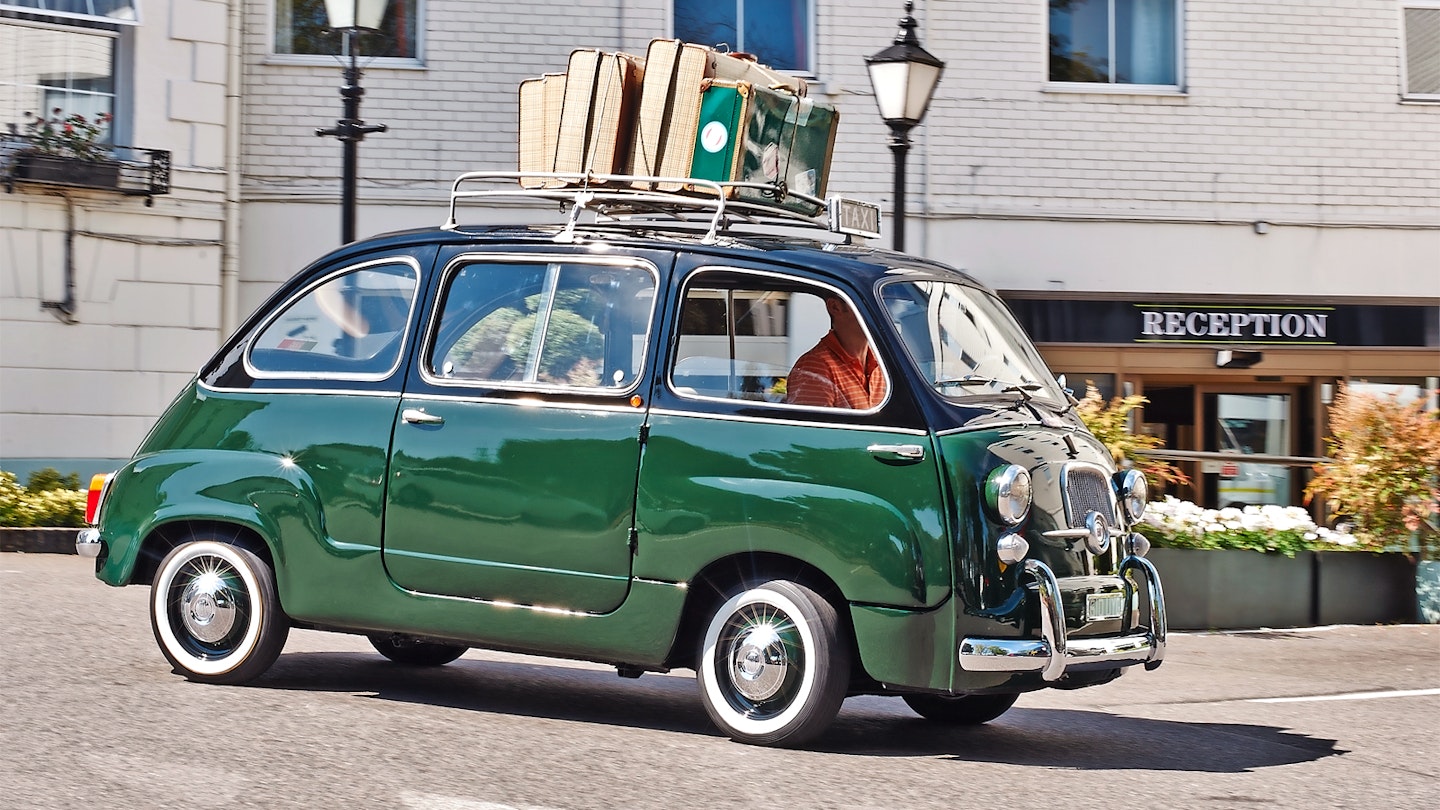
Fiat offered the Multipla as a four-seater, with the front and rear benches converting into a double-bed; and as a six-seater, with two rows of removable folding individual seats. With only one row of seats in place the Multipla has 19sq ft of luggage space, making it one of the most versatile light commercials of its era. To appreciate its impact, remember it had virtually no rivals during its heyday and that as a ‘multi-purpose vehicle’ it predated the Renault Espace by nearly 30 years.
By far the most popular version was the Taxi, which had a division and a luggage platform alongside the driver’s seat. Compared to Fiat’s 1400 Berlina, which also saw service as a taxi across southern Europe, the Multipla was more manoeuvrable, cheaper to buy and far more suited to urban motoring than a heavy six-seater saloon. The ultimate accolade came when Rome staged the 1960 Olympic Games and officials and contestants were transported in a fleet of Multiplas.
The nearest most Britons came to seeing the Fiat was either in a newsreel of the Olympics or in episodes of The Saint set in Rome and featuring Warren Mitchell as a not very plausible cabbie. However, by 1961 some Londoners had travelled in one of Tom Sylvester’s minicabs. At that time few taxi operators realised that the 1869 Carriage Act applied to spot hiring but that a cab fitted with a two-way radio could be pre-booked. These included Sylvester’s fleet of 25 Multiplas, which incurred the wrath of many black-cab drivers. Such an innovation attracted a fair amount of media attention when the Fiats proved perfectly suited to British urban traffic. As Commercial Motor magazine observed in 1957, the only real challenges the Multipla had to face were heavy import duties and freight costs.
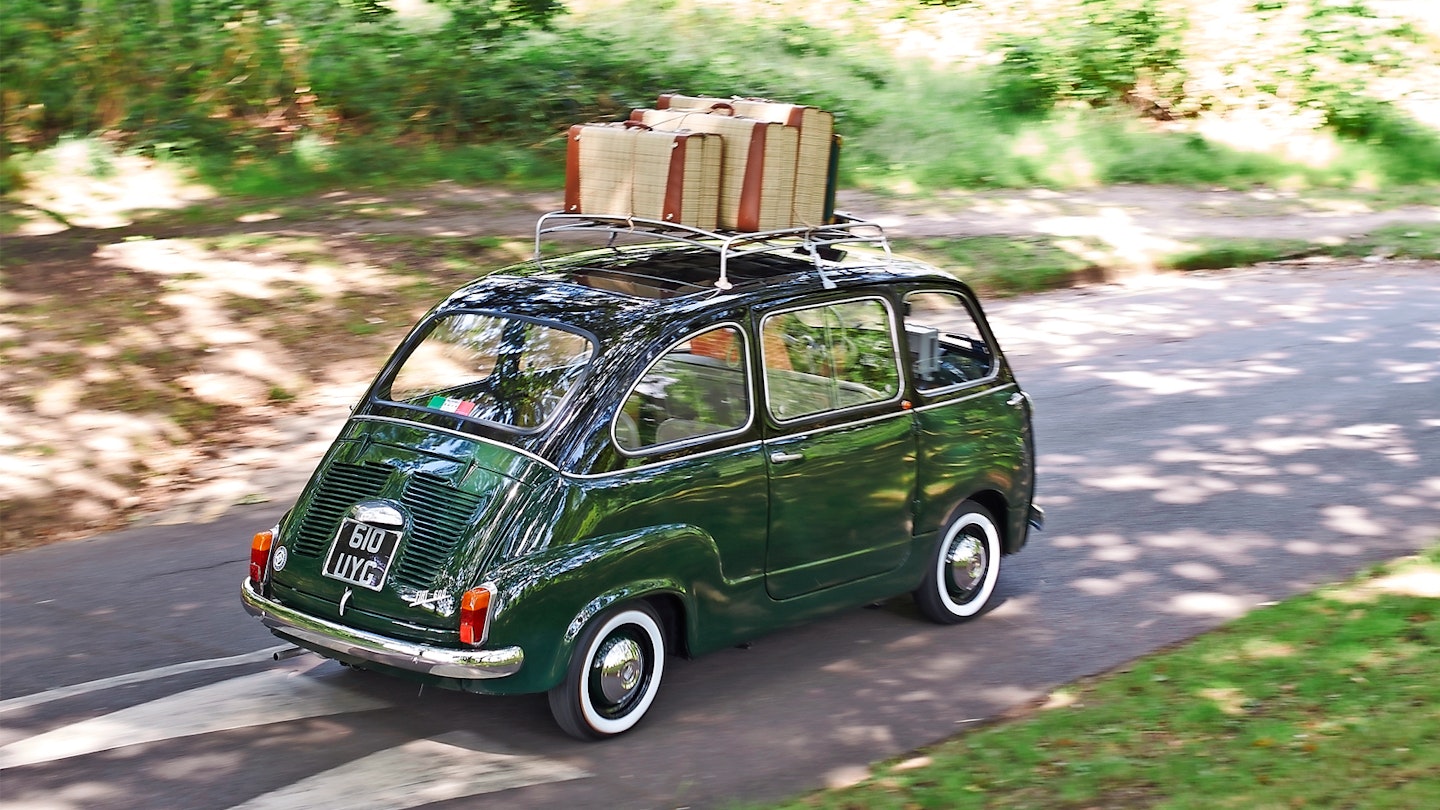
My own abiding memory of Multipla minicabs resplendent in their black and green livery is the gulf between them and the archetypal late-Fifties British taxi, the Austin FX3. It is not just that the latter always conveys a lost world of smog, pipe smoke and teddy boys, it is that its very appearance and road manners are deliberately ultra-conventional. But the Fiat creates its own conventions because it is a car that craves to transport Italian film star Vittorio Gassman to a secret meeting with Sylvia Mangano in a night spot on the Via Veneto as the driver does battle with hordes of Lambrettas. Our 50-year-old test car embodies the post-war miracolo economico in style, performance and practicality.
And in answer to Mondeo Man’s opening questions, it is definitely petrol-powered and it is emphatically not a bubble car or any form of automotive novelty. The Fiat 600 Multipla didn’t just anticipate today’s people carriers by many years, it also told drivers that practicality didn’t have to come at the expense of enjoyment.
